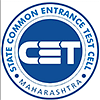
Table of Contents
AEEE syllabus 2025 will have various topics from the 4 subjects of Physics, Mathematics, Chemistry and English from class 11th and class 12th. While some topics from these subjects will be omitted, some extra topics will be added to ensure that student has a strong knowledge of subjects apart from the standard prescribed syllabus for AEEE 2025.
AEEE 2025 Syllabus
AEEE Syllabus is designed to test the students knowledge in Physics, Chemistry, and Mathematics of class 11 and class 12. Hence, questions will be from one of the topics of these subjects.
Since the examination is to test the student’s grip on the concepts of Physics, Chemistry, and Mathematics of class 11 and class 12, it is advised for students to concentrate on textbooks of the subjects mentioned above. The candidates can check the syllabus page.
The skeleton syllabus of AEEE is given below:
| Physics | Chemistry | Mathematics | English |
| Units and dimensions | Basic concepts | Complex Numbers | Articles |
| Mechanics | Atomic structure, chemical bonding, and molecular structure | Linear Inequalities | Synonyms |
| Solids and fluids | Equilibrium and thermodynamics | Permutations and Combinations | Antonyms |
| Heat and thermodynamics | Electrochemistry, kinetics and surface chemistry | Binomial Theorem | Preposition |
| Ray and wave optics | Solid-state and solutions | Sequences and Series | Verb |
AEEE 2025 Mathematics Syllabus
AEEE 2025 Mathematics syllabus is vast and long with a weightage of 30 questions with 90 marks. The detailed syllabus is given below.
Complex Numbers
Complex numbers in the form a+ib and their representation in a plane. Properties of complex numbers. Argand Plane and Polar Representation. Algebra of complex numbers, Modulus and argument (or amplitude) of a complex number, square root of a complex number. Cube roots of unity, triangle inequality.
Permutations and Combinations
A fundamental principle of counting; Permutation as an arrangement and combination as selection, Meaning of P(n,r)and C(n,r).Simple applications.
Binomial Theorem
Binomial theorem for positive integral indices. Pascal’s triangle. General and middle terms in binomial expansions, simple applications.
Sequences and Series
Arithmetic, Geometric and Harmonic progressions. Insertion of Arithmetic Mean (A.M), Geometric mean(G.M) and Harmonic mean (H.M) between two given numbers. Relation between A.M., G.M. and H.M. Special series ∑n, ∑n2, ∑n3. Arithmetic-Geometric Series, Exponential and Logarithmic Series.
AEEE 2025 Physics Syllabus
AEEE physics syllabus 2025 is based on the 12th syllabus. The weightage of the physics syllabus is 10 questions with 30 marks in total. The detailed syllabus is given below:
Units and Dimensions
Units for measurement, a system of units, SI, fundamental and derived units, dimensions and their applications.
Mechanics
Motion in a straight line, uniform, and non-uniform motion, uniformly accelerated motion and its applications Scalars and Vectors, and their properties;
Resolution of vectors, scalar and vector products; uniform circular motion and its applications, projectile motion Newton’s Laws of motion; conservation of linear momentum and its applications, laws of friction, Concept of work, energy and power; energy-kinetic and potential.
Solids and Fluids
Solids: Elastic properties, Hooke’s law, Young’s modulus, bulk modulus, modulus of rigidity.Liquids: Cohesion and adhesion; surface energy and surface tension; a flow of fluids, Bernoulli’s theorem and its applications; viscosity, Stoke’s Law, terminal velocity.
Oscillations and Waves
Periodic motion, simple harmonic motion and its equation, oscillations of a spring and simple pendulum. Wave motion, properties of waves, longitudinal and transverse waves, superposition of waves, Progressive and standing waves. Free and forced oscillations, resonance, a vibration of strings and air columns, beats, Doppler effect.
AEEE 2025 Chemistry Syllabus
The AEEE 2025 chemistry syllabus is based on the 12th syllabus. The weightage of chemistry is 30 marks. The syllabus is given below.
Basic Concepts
Atomic and molecular masses, mole concept and molar mass, percentage composition, empirical and molecular formula, chemical reactions, stoichiometry and calculations based on stoichiometry.
Atomic Structure, Chemical Bonding and Molecular Structure
Bohr’s model, de Broglie’s and Heisenberg’s principles, Quantum mechanical model, Orbital concept and filling up of electrons; Bond formation and bond parameters; Valence bond and molecular orbital theory; VSEPR theory; Hybridization involving s, p, and d orbital; Hydrogen bond.
Equilibrium and Thermodynamics
Law of chemical equilibrium and Equilibrium Constant; Homogeneous and Heterogeneous equilibria; LeChatelier’s principle, Ionic equilibrium; Acids, Bases, Salts and Buffers; Solubility product; Thermodynamic state; Enthalpy, Entropy and Gibbs free energy; Heats of reactions; Spontaneous and nonspontaneous processes.
Electrochemistry, Kinetics and Surface Chemistry
The specific, molar and equivalent conductance of weak and strong electrolytes; Kohlrausch law; Electrochemical cells and Nernst equation; batteries, fuel cells and corrosion Rate of a reaction and factors affecting the rate: Rate constant, order and molecularity, collision theory. Physisorption and chemisorptions; colloids and emulsions; homogeneous and heterogeneous catalysis.
AEEE 2025 Exam Pattern
The participant must know and understand the entrance exam pattern to tackle the exam with high scores. The exam pattern enables the Candidate to concentrate on the topics that need more focus and time. It depends on the Candidate personally and the weightage of each section.
AEEE exam pattern is given below.
| Subjects | Number of Questions | Marks |
|---|---|---|
| Mathematics | 30 | 90 |
| Physics | 15 | 45 |
| Chemistry | 10 | 30 |
| English | 5 | 15 |
| Total | 60 | 180 |
Read More: AEEE 2025 Exam Pattern






















